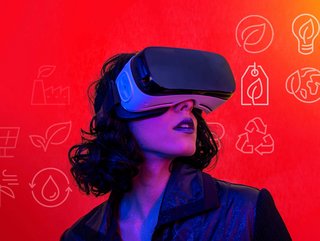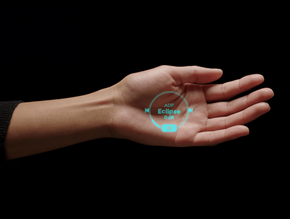How the metaverse will change how businesses operate

The metaverse continues to be a topic that dominates conversations in the tech industry, as businesses look at how they may need to adapt to its associated impact. Its potential is being taken seriously with some of the leading tech companies - Meta, Google, Microsoft - all investing millions into metaverse projects to bring the virtual world to life.
Because of the metaverse’s possibilities, businesses have been exploring how to tap into the new potential. While some companies focused on social connectivity, and others on the types of services that can be sold in the metaverse, there is one under-explored area: the very buildings and spaces we live and work in. This is vital, as less than one per cent of the world’s four billion buildings and 20 billion spaces are digitised – leaving a huge growth capacity of around 99 per cent. Combined with the global value of real estate at $230trn, it is clear that there is a ripe area of growth in conjunction with the metaverse. If businesses grab the opportunity, they have an early-mover advantage in defining what the future may look like.
The business potential of the metaverse
The metaverse could drastically change the way that businesses and consumers experience, interact with, and see the physical area of the built world. Digital twins bring online a wealth of analog data that can be searched, modelled, and used to draw additional value from physical spaces. There is a lot of value in collecting this data and using the insights to improve businesses and their services. The constant adaptability of the data could have a myriad of uses in a potential mirror world, using a variety of emerging technologies to build the vision.
An example technology that can help with building out the metaverse is digital twins, otherwise known as digital replicas of the real world. By deploying digital twins, businesses can import dimensionally accurate real-life spaces into the virtual mirror world that the metaverse offers. Businesses that use digital twins as part of their strategic planning can optimise their own productivity and operations while offering new experiences. From the evolving area of property ownership, or virtual games that use AI technologies that underpin it all, digital twins help to build the mirror world by transferring replicas from the real world to the virtual.
Using digital twins across the metaverse
There are a multitude of business use-cases within the metaverse. By integrating the two worlds together, people can access convenient, engaging, and digital-first works, with a range of applications across multiple industries. Examples include engineering, construction, architecture, travel and hospitality, insurance, and facilities.
Take retail as one example. Even before the pandemic, traditional brick-and-mortar locations were under pressure to remain competitive in a market gradually becoming taken by eCommerce. Yet by using digital twin technologies, retail businesses can now remodel and reshape hundreds of stores remotely, or convert them into showcase locations. The technology also enables retailers to create more immersive experiences to increase customer engagement – benefits which can also bleed into the metaverse as well, to drive further interest in products.
Building the metaverse over time
Building the metaverse will likely take over a decade, and its final form is difficult to fully predict. Yet taken together, we can be confident that a potential version will use digital twin technologies to transfer elements of the real world to the mirror world. Its ease of use will likely accelerate the transition as well; by simplifying the process to pressing a few buttons, it democratises access to the technology and allows anyone to transfer their assets.
Additionally, the multitude of new technologies will merge with digital twin technologies to build the metaverse over time. Professionals can use 3D spatial data cameras to meld the structural integrity of a space with 4K HD photographic realism. Artificial Intelligence (AI) can also be part of the 3D reconstruction process, which can be fully automated to enable businesses to scale with equal precision. The technology is also more widely accessible than ever before, via iPhone and Android phones, or 360 degree / LIDAR cameras.
At its heart, the potential scope of a metaverse as an interactive and richly-detailed evolution of the world is immense. By digitising the built world via digital twins, businesses can unlock their asset’s value for every space in the world, bringing about the emergence of a possibly limitless number of potential metaverse services. Driven by ever-evolving technological innovation, with the insights from the in-depth arrangement of analog data available in the physical built environment, digital twins are only just scratching the surface of potentially the largest opportunity of the next decade and beyond.






